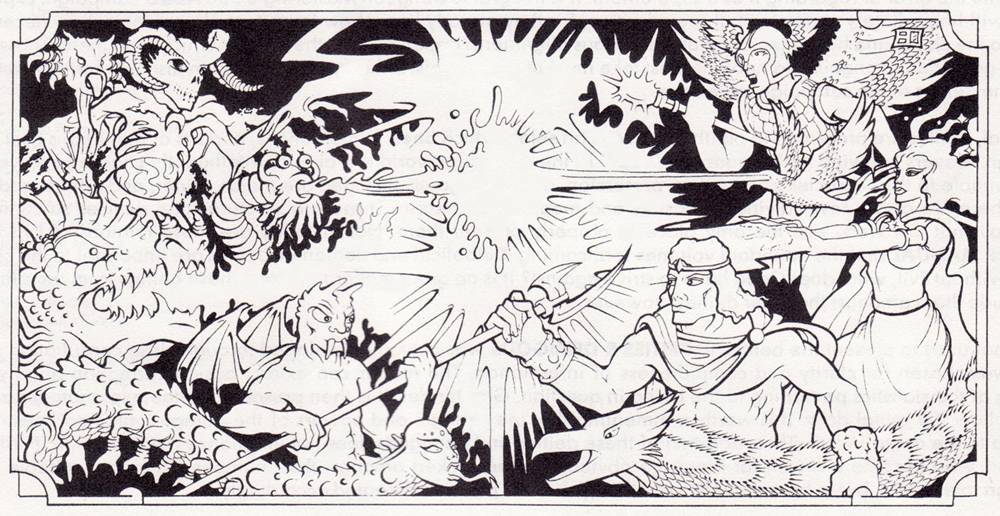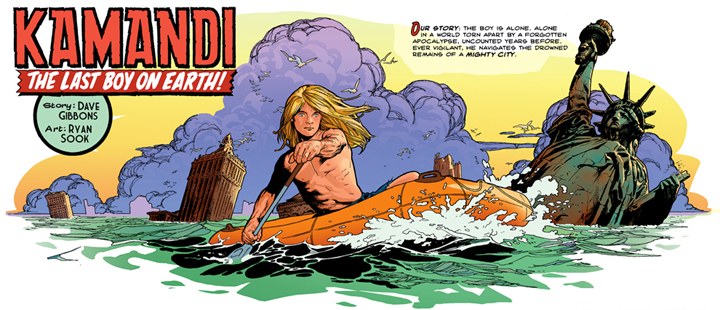1 hour ago
Sunday, December 3, 2017
Dictionary of Azurth Updated
It's been a while since my last update of the Dictionary of Azurth, your abbreviated (but free) guide to assort people, places, and things in the Land of Azurth. This update includes the skinny of Elementalist wizards, the Land of Under-Sea, and the very seasonal Father Yule.
Get it here.
Friday, December 1, 2017
The Ahistorical Historical Setting
 |
| Historically accurate Aristotle? |
The changes can be big. Reign: The Conqueror (based on the novel Arekusandā Senki by Hiroshi Aramata) re-imagines the life of Alexander the Great as a sort of science fantasy thing with giant Persian war machines and Pythagorean ninjas. Or, they can be subtle, like Black Sails weaving historical pirates with a sort of prequel to Treasure Island. (The difference I see between this last one and a standard historical setting which would generally tend to insert fictional characters, i.e. the PCs, into history, is the "high concept" of the literary/historical mashup.)
 |
| A lesson on Greek myth every week? |
Let history be your guide, not your boss.
Thursday, November 30, 2017
Weird Revisited: Nawr the All-Consuming
Need a rat god? (And who doesn't really?) Here's a petty god post from December 2011 that has you covered.

Symbol: Stylized image of a rat-king, as if the animals are dancing in a circle.
Alignment: Chaotic
Ravenous Nawr is one of the group of petty deities know as the vermin gods. It is not so much worshipped as placated. Every harvest, offerings of grain are arrayed around small statues or carvings of rats where real rodents can consume them.
If this ritual is not observed, there is chance that rats will gather and in the twist and tumult of rodent bodies, a rat-king will form and instantiate the godling. The composite deity wil summon up a swarms of rats and swirl through the community that has offended it, chewing, biting, and possibly consuming everything in its path.
The visitation always occurs at night and is of variable duration, but always ends by sunrise.

Symbol: Stylized image of a rat-king, as if the animals are dancing in a circle.
Alignment: Chaotic
Ravenous Nawr is one of the group of petty deities know as the vermin gods. It is not so much worshipped as placated. Every harvest, offerings of grain are arrayed around small statues or carvings of rats where real rodents can consume them.
If this ritual is not observed, there is chance that rats will gather and in the twist and tumult of rodent bodies, a rat-king will form and instantiate the godling. The composite deity wil summon up a swarms of rats and swirl through the community that has offended it, chewing, biting, and possibly consuming everything in its path.
The visitation always occurs at night and is of variable duration, but always ends by sunrise.
Monday, November 27, 2017
Planescape Cold War
"Intelligence work has one moral law—it is justified by results."
- The Spy Who Came in From the Cold, John Le Carre
Take Planescape's Sigil and re-imagine it as vaguely post-World War (it really doesn't matter which one) in technology and sensibility. It's the center of fractious sometimes warring (but mostly cold warring) planes, but now it's more like Cold War Berlin or Allied-occupied Vienna.
Keep all the Planescape factions and conflict and you've got a perfect locale for metacosmic Cold War paranoia and spy shennanigans. You could play it up swinging 60s spy-fi or something darker.
There's always room for William S. Burroughs in something like this, and VanderMeer's Finch and Grant Morrison's The Filth might also be instructive. Mostly you could stick to the usual spy fiction suspects.
Sunday, November 26, 2017
The Meaning of Good & Evil (Alignments)
I don't use alignment much in my games admittedly, but I do like the idea of alignment as indication of at best only loosely morality-related cosmic teams or alliances. Even with the approach their are times where you might need to articulate in some way what an alignment means on a closer to human level. What follows is a way of looking at it in those situation.
The idea (not original to me) is that Law vs. Chaos is the primary conflict underpinning the multiverse. This works well with both the Appendix N source material and earliest iterations of D&D. The Good vs. Evil can only be understood in relation to that primary axis. This secondary parameter gives an indication of the zealotry and methods employed to combat the opposing force. Those on the Good side of things believe that the opposing force can be moderated, ameliorated, or dealt with with less violent means. Those on the evil side of things believe that the opposing force cannot be tolerated or reasoned with, only destroyed.
So Lawful Good and Lawful Evil agree that Chaos is a threat, but Lawful Good has a more moderate maybe even "hate the sin, love the sinner" view, whereas Lawful Evil feels all chaos must die by any means necessary. Chaotic Good believes that Law is a wrongheaded constraint on freedom, but hearts and minds can be changed without violence in most cases (violence being coercion, after all), whereas Chaotic Evil wants what it wants so intently it's willing to see everything burn.
This way of looking at things has the advantage of showing a way around the rigid, asshole paladin, and also explaining the Dwarf/Elf tension despite the fact they are both Good, and also suggests demons and Devils would never team-up. Neutral Goods become "let's all get along" maybe and Neutral Evil is perhaps "a pox on all your houses!" True Neutral remains about balance.
Friday, November 24, 2017
Weird Revisited: The Infernal Mob
The above is Mammon, boss of the Pluton family, ably rendered by Jeremy (that Dandy in the Underworld). He's one of diabolic mobsters that control Hell in the world of Weird Adventures. Check out these posts if you missed them back in 2011:
Andras: "Hell's Hoods: The Owl"
Avernus family: "Hell's Hoods: Meet the Avernus Family"
Belial: "Hell's Hoods: Sin's Queen"
Bifrons: "Hell's Hoods: Two-Faced Politician"
Mammon: "Hell's Hoods: The Fat Man"
Moloch: "Hell's Hoods: The Bull"
Pluton family: "Hell's Hoods: Casino Infernale"
Wednesday, November 22, 2017
Wednesday Comics: Kamandi
According to the DC Comics 1976 Calendar, November 21st was the birthday of Kamandi. In the unlikely event anyone reading this blog doesn't know who Kamandi is the last human born in a underground bunker called Command D (from whence he takes his name) after a nebulous cataclysm known as the Great Disaster has cast human civilization in ruin and anthropomorphic animals have risen in their place. Kamandi was created by Jack Kirby in 1972 and his original series went on for 59 post-apocalyptic issues.
In honor of Kamandi's birthday, here are the places to catch up on the highlights of his story if you are unfamiliar:
Kamandi by Jack Kirby Omnibus: Kirby's original run on the title has been collected in DC Archives (out of print) and previous two volume omnibuses (also out of print). The new omnibus is schedules to be released in March of 2018. He carries a hefty price tage, but also a hefty 896 page page-count. This is the most essential reading on the list.
Wednesday Comics: was a 2009 anthology published in a broadsheet format resembling a Sunday newspaper comics section. There was a serialized Kamandi story written by Dave Gibbons with art by Ryan Sook with a real comic strip feel, sort of like Prince Valiant. Sook's artwork is gorgeous. There are several other good stories in this hardcover, so you don't have to get it for Kamandi alone. A warning though: It is awkardly sized at nearly 18 inches tall, so it's tough to find a shelf for it.
Kamandi Challenge: Back in the '80s DC did a sort of round robin limited series called DC Challenge. A number of DC characters appeared, but notable Kamandi did not. This year, they're doing similar sort of series, but focused on Kamandi, aptly named Kamandi Challenge. Like the original DC Challenge, Kamandi Challenge is uneven and a bit loose in its narrative as every creator tries to do something with the threads they are given. Still, it's all Kamandi and very inventive. The individual issues can be purchased digitally at Comixology or physical at your local comic book store. The collected hardcover will be out in April of 2018.
In honor of Kamandi's birthday, here are the places to catch up on the highlights of his story if you are unfamiliar:
Kamandi by Jack Kirby Omnibus: Kirby's original run on the title has been collected in DC Archives (out of print) and previous two volume omnibuses (also out of print). The new omnibus is schedules to be released in March of 2018. He carries a hefty price tage, but also a hefty 896 page page-count. This is the most essential reading on the list.
Wednesday Comics: was a 2009 anthology published in a broadsheet format resembling a Sunday newspaper comics section. There was a serialized Kamandi story written by Dave Gibbons with art by Ryan Sook with a real comic strip feel, sort of like Prince Valiant. Sook's artwork is gorgeous. There are several other good stories in this hardcover, so you don't have to get it for Kamandi alone. A warning though: It is awkardly sized at nearly 18 inches tall, so it's tough to find a shelf for it.
Kamandi Challenge: Back in the '80s DC did a sort of round robin limited series called DC Challenge. A number of DC characters appeared, but notable Kamandi did not. This year, they're doing similar sort of series, but focused on Kamandi, aptly named Kamandi Challenge. Like the original DC Challenge, Kamandi Challenge is uneven and a bit loose in its narrative as every creator tries to do something with the threads they are given. Still, it's all Kamandi and very inventive. The individual issues can be purchased digitally at Comixology or physical at your local comic book store. The collected hardcover will be out in April of 2018.
Subscribe to:
Comments (Atom)















